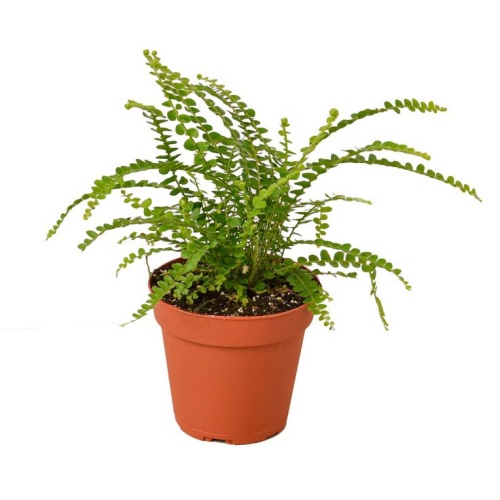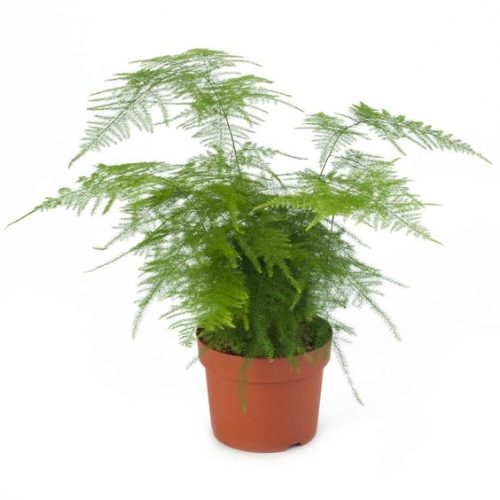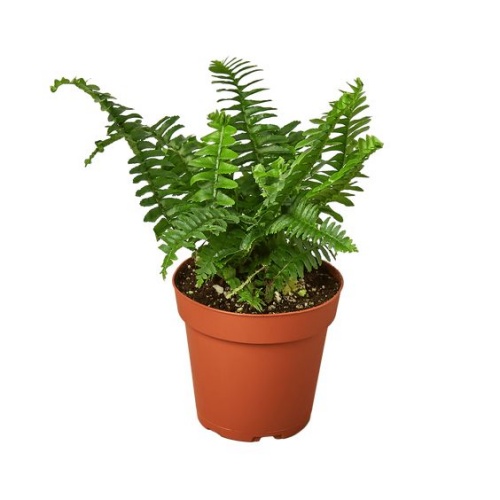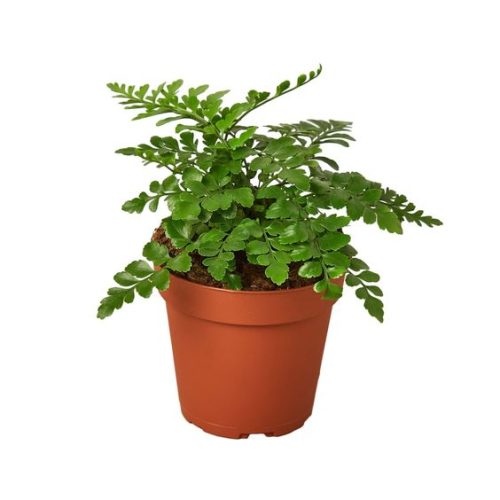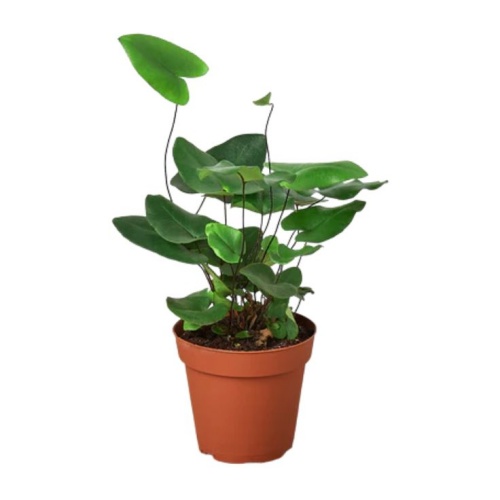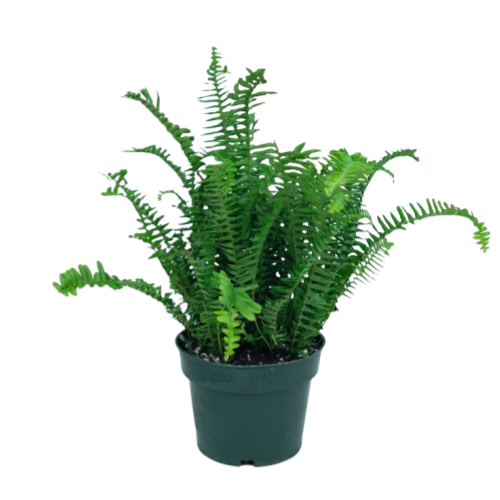เฟิร์นรังนก
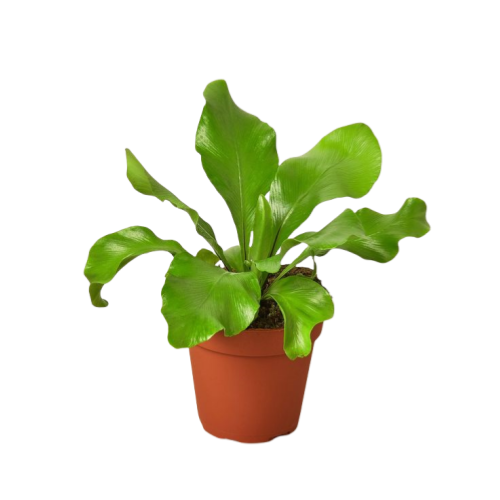
- ชื่อพฤกษศาสตร์: Asplenium nidus
- นามสกุล: aspleniaceae
- ลำต้น:
- อุณหภูมิ:
- อื่นๆ:
ภาพรวม
คำอธิบายผลิตภัณฑ์
ลักษณะเด่นของเฟิร์นและฟังก์ชันอันน่าทึ่ง: นิทานเขตร้อนของเฟิร์นรังนก
ต้นกำเนิดและความสง่างามของเฟิร์นรังนก
อัญมณีของป่าฝนเขตร้อน
เฟิร์นรังนก มีชื่อทางวิทยาศาสตร์ว่า Asplenium nidus และอยู่ในวงศ์ Aspleniaceae มีถิ่นกำเนิดในเขตร้อนของเอเชีย ออสเตรเลียตะวันออก และโพลินีเซีย โดยทั่วไปแล้วพืชชนิดนี้จะเติบโตบนต้นไม้ในถิ่นที่อยู่ตามธรรมชาติ โดยเฉพาะอย่างยิ่งในป่าฝนเขตร้อน ซึ่งมันเกาะติดกับส่วนโค้งของลำต้นหรือกิ่งก้าน แสดงให้เห็นภาพที่สวยงามของการอยู่ร่วมกันอย่างกลมกลืนกับธรรมชาติ
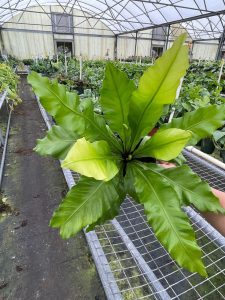
เฟิร์นรังนก
ดอกกุหลาบและใบที่ไม่เหมือนใคร
ที่ เฟิร์นรังนก มีชื่อเสียงในด้านรูปแบบการเจริญเติบโตที่โดดเด่น โดยมีลักษณะเป็นดอกกุหลาบที่โดดเด่น มีใบกว้าง รูปหอก เป็นมันเงา และมีใบสีเขียวสดใส ประดับด้วยเส้นกลางใบสีเข้มที่ตัดกันและขอบหยัก กระจุกใบไม้ที่สะดุดตามีลักษณะการเจริญเติบโตคล้ายแจกัน ซึ่งสร้างเอฟเฟกต์พิเศษที่คล้ายกับลูกขนไก่ โดยส่วนกลางมีลักษณะคล้ายรังนก
ใบใหม่เกิดขึ้นอย่างต่อเนื่องจากพื้นที่ส่วนกลางรังนกทำให้พืชมีความงามที่มีชีวิตชีวาและมีชีวิตชีวา Fronds ที่เป็นผู้ใหญ่สามารถเข้าถึงการเจริญเติบโตกลางแจ้ง 4-5 ฟุต แต่มีระดับปานกลางมากขึ้นเมื่อปลูกในภาชนะในอาคารโดยทั่วไป 1-2 ฟุต กรณีสปอร์ตั้งอยู่ที่ด้านล่างของใบหลอมมาจาก midrib ไปยังขอบใบเพิ่มองค์ประกอบของความลึกลับและความละเอียดอ่อน
คู่มือการดูแลที่จำเป็นสำหรับเฟิร์นรังนก
เคล็ดลับการดูแล
เฟิร์นรังนกเป็นพืชเมืองร้อน และนิสัยการเจริญเติบโตมีความเกี่ยวข้องอย่างใกล้ชิดกับภูมิอากาศเขตร้อน พืชชนิดนี้ชอบสภาพแวดล้อมที่ชื้นและอบอุ่น โดยต้องการความชื้นสูงเพื่อรักษาสีเขียวสดใสและความเงางาม เมื่อปลูกในบ้าน ควรวางให้ห่างจากร่างและแหล่งความร้อน เพื่อหลีกเลี่ยงความผันผวนของอุณหภูมิที่อาจทำให้พืชเครียด
แสงกระจายปานกลาง
เฟิร์นรังนกไม่ต้องการแสงแดดโดยตรง พวกมันเจริญเติบโตได้ดีขึ้นภายใต้แสงที่สว่างและพร่า แสงแดดโดยตรงอาจทำให้ใบไม้ไหม้ได้ ดังนั้น ทางที่ดีควรวางเฟิร์นรังนกไว้ในที่ที่สามารถรับแสงทางอ้อมได้ เช่น หน้าต่างใกล้ทิศตะวันออกหรือหันหน้าไปทางทิศเหนือ กลางแจ้งมักเติบโตในร่มเงาของต้นไม้เพื่อให้ร่มเงาตามที่พวกเขาต้องการ
อบอุ่นและมั่นคง
ชอบอุณหภูมิที่อบอุ่นและคงที่ โดยมีช่วงการเจริญเติบโตที่เหมาะสมคือ 18°C ถึง 27°C (65°F ถึง 80°F) พวกมันไม่ทนต่อความหนาวเย็น ดังนั้นจึงต้องเก็บไว้ที่อุณหภูมิสูงกว่า 15°C (59°F) ในช่วงฤดูหนาวเพื่อหลีกเลี่ยงความเสียหายจากความเย็น ในสภาพแวดล้อมที่เย็นกว่า อัตราการเติบโตของเฟิร์นรังนกจะช้าลงหรืออาจหยุดชะงักลงด้วยซ้ำ
การระบายน้ำอย่างดีและอุดมสมบูรณ์
สำหรับดินนั้นจำเป็นต้องมีสื่อที่ระบายน้ำได้ดีและอุดมสมบูรณ์ พวกเขาไม่ชอบสภาพที่มีน้ำขัง ดังนั้นดินควรมีอินทรียวัตถุในสัดส่วน เช่น ราใบหรือพีท เพื่อรักษาความชุ่มชื้นและระบายน้ำได้ดี นอกจากนี้ การปฏิสนธิเป็นประจำยังช่วยให้เฟิร์นรังนกเจริญเติบโตได้ดี โดยเฉพาะในช่วงฤดูปลูก โดยสามารถใส่ปุ๋ยน้ำได้เดือนละครั้ง
ความสวยงามและการประยุกต์เฟิร์นรังนก
เสน่ห์อันเป็นเอกลักษณ์ของเฟิร์นรังนก
เฟิร์นรังนก (Asplenium nidus) มีชื่อเสียงในด้านลักษณะทางสัณฐานวิทยาที่โดดเด่น โดยเป็น epiphyte ยืนต้น ใบของมันแผ่ออกไปด้านนอกของดอกกุหลาบตรงกลาง ทำให้เกิดส่วนโค้งที่สวยงาม แทนที่จะเป็นใบที่มีขนนกซึ่งพบได้ทั่วไปในเฟิร์นชนิดอื่นๆ ใบเรียบ รูปใบหอก และบางครั้งก็มีคลื่นเล็กน้อยเมื่อได้รับแสงที่เพียงพอ เฟิร์นรังนกที่โตเต็มวัยสามารถเติบโตได้สูงกลางแจ้งได้สูงถึง 3-5 ฟุต ในขณะที่อยู่ในตู้คอนเทนเนอร์มักจะมีขนาดเล็กกว่า โดยสูงประมาณ 2 ฟุต
การตั้งค่าที่เหมาะสำหรับเฟิร์นรังนก
เนื่องจากความมีไหวพริบในเขตร้อนและรูปลักษณ์ที่สง่างามพวกเขามักจะใช้สำหรับการตกแต่งในร่มโดยเฉพาะอย่างยิ่งในสภาพแวดล้อมที่เป็นที่ต้องการของป่าฝน พวกเขาเหมาะสำหรับการจัดวางในห้องน้ำเนื่องจากเฟิร์นเหล่านี้เจริญเติบโตในสภาพแวดล้อมที่อบอุ่นและชื้น นอกจากนี้พวกเขายังทำพืชแขวนที่ยอดเยี่ยมวางในตะกร้าหรือชาวสวนทอเพื่อเพิ่มสัมผัสของเขตร้อนตามธรรมชาติในพื้นที่นั่งเล่น เนื่องจากพวกเขาไม่ต้องการแสงแดดโดยตรงหน้าต่างทางทิศเหนือหรือทิศตะวันออกจึงเป็นสถานที่ที่เหมาะ นอกจากนี้ยังทำหน้าที่เป็นจุดโฟกัสที่น่าดึงดูดใจในสวนในร่มโดยเฉพาะอย่างยิ่งการดึงดูดผู้ที่ชื่นชอบพืชที่ต้องการรวมบรรยากาศเขตร้อนเข้ากับบ้านของพวกเขา





